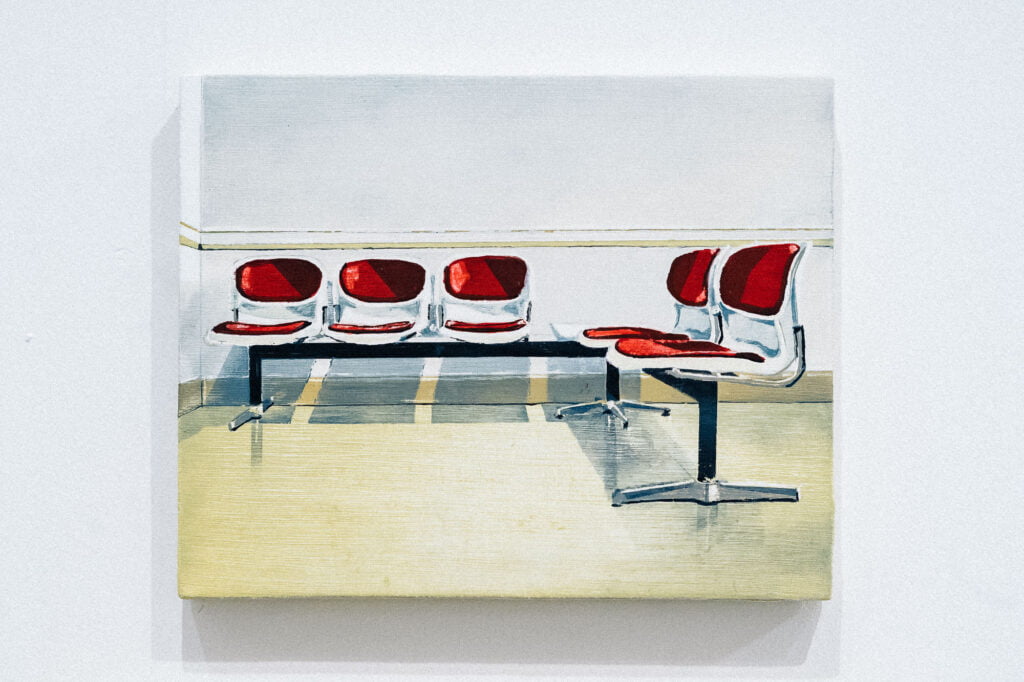
Photo credit: Nick Baines (@peanutkaiser)
With the advent of the Hyde Park Art Club (HPAC) and the first ever show ‘Chrysalis’ organised as part of it, we have been chatting to the artists involved in the exhibition: their inspirations, materials, process and future plans. This time we interviewed Richard Baker whose tranquil paintings of furniture, clothing and other objects remain timeless while also capturing a very specific moment in time.
Could you tell me a bit about your work in general?
I make small scale oil paintings of objects, usually items of furniture, but sometimes clothing and other objects as well. These objects are presented to the viewer isolated and dislocated from their conventional settings. The objects are always unadorned and appear as formal arrangements which reference 20th century painterly abstraction. On one level the work is an investigation into the hidden human histories behind these seemingly insignificant objects which bear witness to human activity, but it is also an investigation into the interrelationship between material, image, object and time.
Where does the fascination with furniture comes from, and in relation to that – where do the actual subjects come from? Are these real objects, photographs, or amalgamations of the two?
From a young age I have been interested in, and acutely aware of, the interior spaces we inhabit and how we furnish them. This series of works began just after I moved into an unfurnished house, and I was spending a lot of time on eBay looking for furniture. I realised that the photographs I was seeing were very painterly in their compositional qualities with elements of 20th century abstraction and formalism created by the simple, often empty (other than the depicted object), interiors. I began collecting these images and searching them out on various commerce websites and repurposed them by turning them into paintings. So, the objects are real but are represented by a photograph which I then use as source material for the paintings.
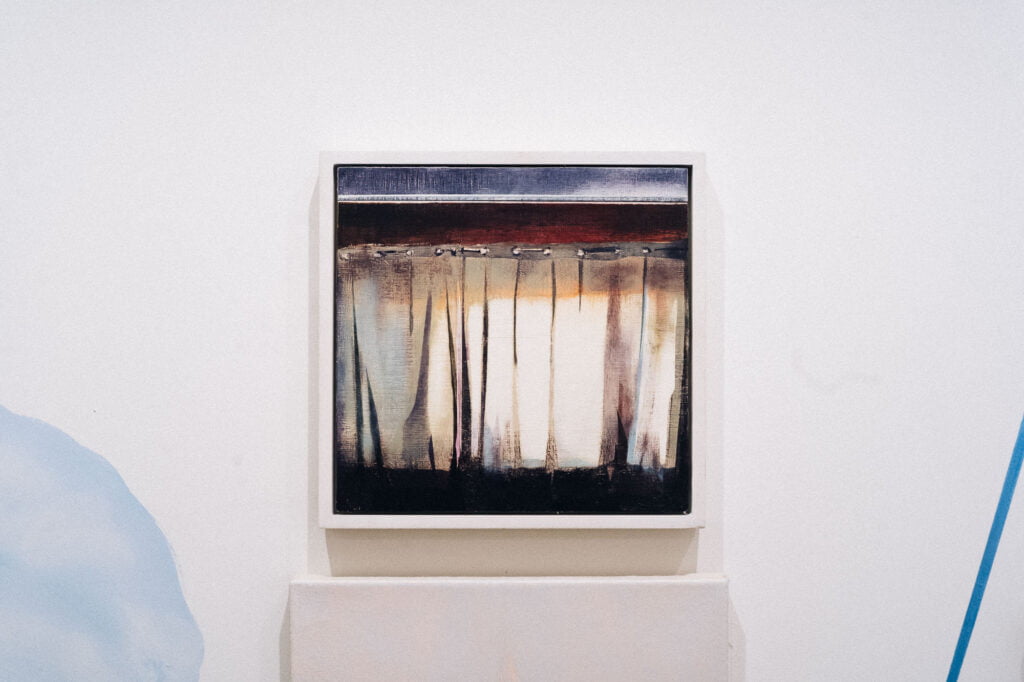
Photo credit: Nick Baines (@peanutkaiser)
How do you choose the perspective from which to paint your subjects from? The shadows and reflections seem like key characters in your work so in order to achieve that, do you choose to paint at a specific time of day?
The paintings are made from a photographic source and so, it doesn’t matter what time of day I paint, but I do tend to prefer painting in the evening. The light in my studio is very controlled and always the same. Having said that, the shadows and reflections are key elements, as you said, so this is achieved by my selection of the found photographic image. The images are often taken with several different light sources by amateur photographers; this helps produce interesting and unusual shadows and reflections. The same can be said regarding the perspective. I know what I want to produce and so select the source photographs accordingly. This often translates into a frontality and flatness where the object portrayed is seen directly from the front. This choice reinforces the flatness of the painted surface and speaks to the qualities of abstraction whilst still portraying a recognisable object within a space.
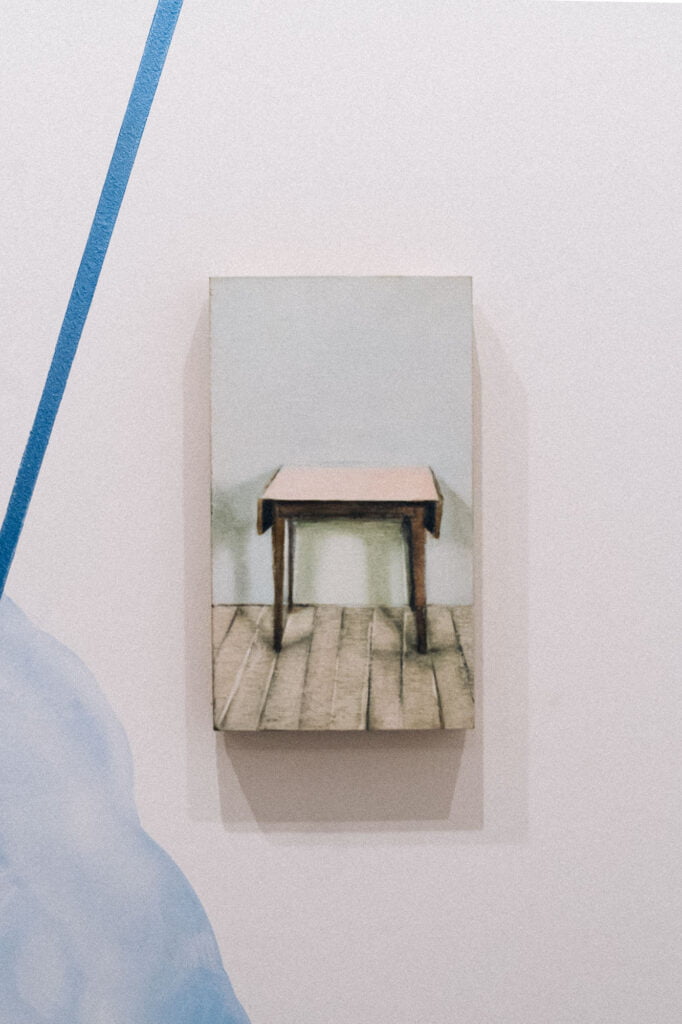
Photo credit: Nick Baines (@peanutkaiser)
There is a Hopper’esque solitude to your paintings, but also a retro feeling – there aren’t any modern digital devices in sight, if there is clothing visible the style of it is timeless. My guess is that the furniture you choose leans towards a 70s aesthetic, but realistically the scenes could be from any time. Could you talk a bit about this timeless quality?
I’m always aware of the Hopper’esque quality to my work, it is often commented upon. However, I do feel that this is in many ways arrived at subconsciously. Hopper was my first introduction to painting; through cheap reproductions on the walls of a restaurant my parents took me to as a child. I can remember that I liked them, but I had no understanding of why at the time. I think sometimes, things from your childhood sink in further than you realise and then play out, subconsciously, later in life. There are similarities in the use of strong shadows and lighting, and the use of a restricted palette. However, the majority of Hopper’s work is peopled, if only by a solitary figure, which is something I don’t do. I feel that the use of a figure in many ways can block a viewer’s participation in, and access into a painting.
The furniture I choose to depict is from the period between the Bauhaus designs of the 1920s to mid-century modern designs up to the late 1960s. This is a deliberate strategy on my part for a number of reasons: as a reference to the minimalism and functionality of modernist design which appeals to me aesthetically, but also, depicting these objects allows me to play with the notion of linear time. The objects are old but the photographs of them, and subsequent paintings are contemporary. Also, these objects are very desirable at the moment, you are as likely to find them in a modern home as you are to have experienced them in the house of your parents or grandparents. The critic David Joselit states that “Painting marks time, rather than intervening in the events that populate it. Each and every painting is a time battery.”. I use these objects in my paintings as a visual motif which describes the notion of painting as a medium that challenges the perception that time only ever moves forward in a straight line and at a set pace.
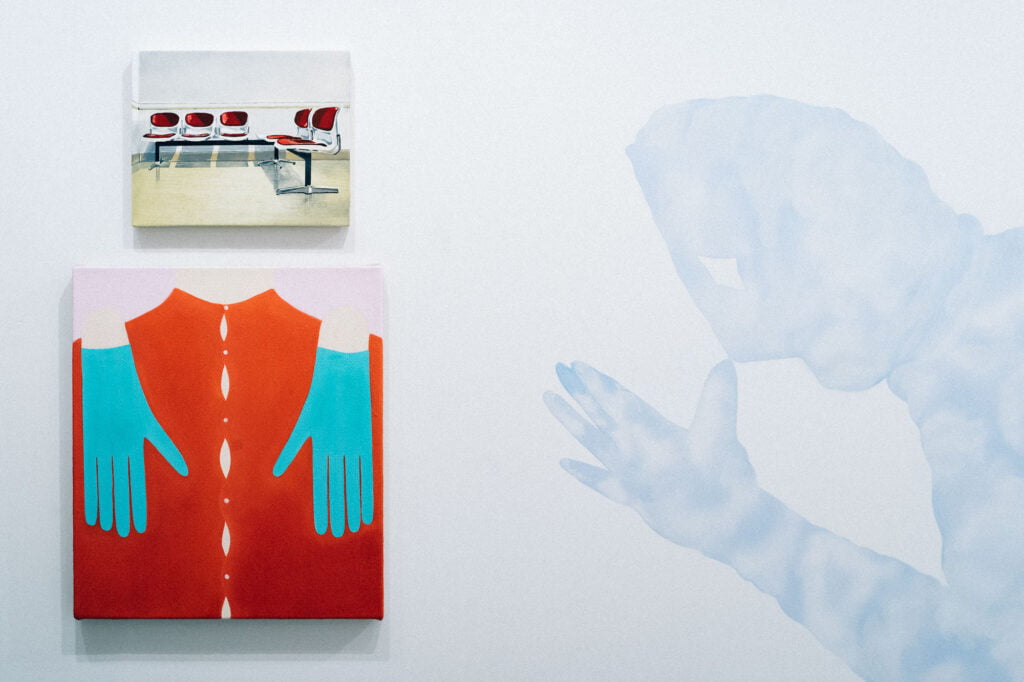
Photo credit: Nick Baines (@peanutkaiser)
Do you have any shows coming up, or any news to share?
I have just had a painting shortlisted for the Wells Art Contemporary Prize. The shortlisted works will be exhibited at Wells Cathedral from 28th August until 27th September.
___
You can see more of Richard’s work on his website.
You can find out more about HPAC here.
Filed under: Art & Photography
Tagged with: abstraction, art, artist, furniture, Hyde Park Art Club, interview, painting
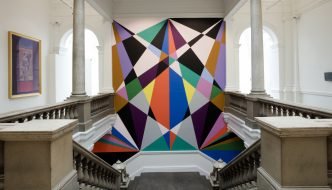

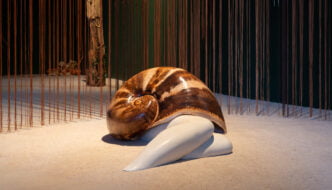
Comments